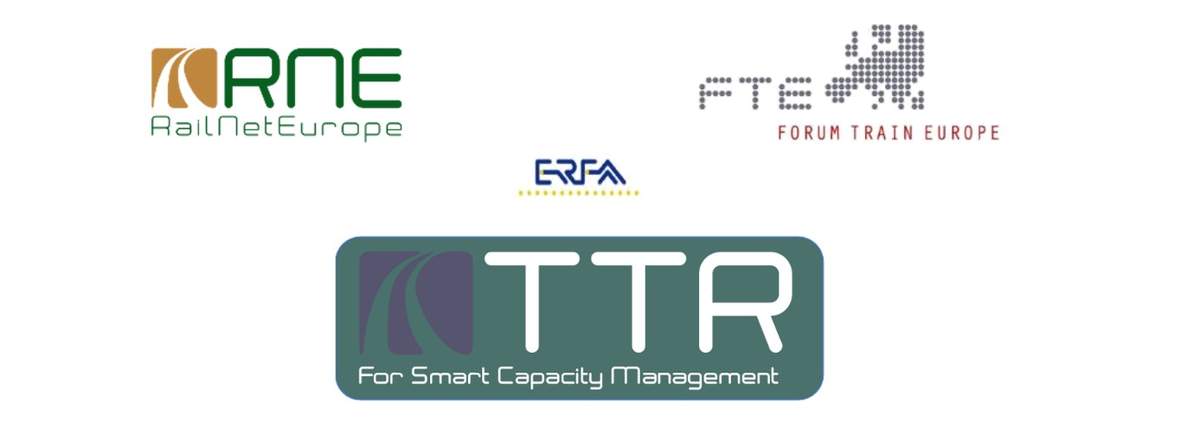Introduction/links
Introduction to TTR
Today's capacity management process, created in the past century, does not reflect the market needs anymore. It calls for improvements in regards of flexibility, efficiency, and effectiveness, besides being not entirely cost-optimal. Moreover, the national particularities complicate the international harmonisation and stand in the way of seamless cross-border transport, better utilisation of existing infrastructure and further development of the single European railway area. Therefore in 2014, Forum Train Europe (FTE) and RailNetEurope (RNE), supported by the European Rail Freight Association (ERFA) have joined forces to start an ambitious project – «Timetabling and Capacity Redesign for Smart Capacity Management», or shortly TTR. Today, TTR has full attention of the European Commission, IRG-Rail and other railway stakeholders. Moreover, TTR program is considered as the important mean how to fulfill the transport objectives of the European Green Deal.

This page provides a short introduction to the TTR benefits. Besides, you might also explore:
Benefits of TTR
The final and ultimate benefit of the TTR process is to support the shift to rail by:
- Earlier ticket sales to passengers than today by 2 months and more due to earlier annual path allocation.
- Safeguarded capacity of sufficient quality for moments when the transport details are known for a reliable request (higher flexibility). No need of «just to get some capacity» and «just in case it is needed» requests anymore.
- Introduction of the possibility to place single capacity requests valid for several years, even when ordering after the annual timetabling phase, in contrast to today when such a capacity shall be requested by up to 4 separated requests at 3 different points in time.
- Decrease of redundant work for both, IMs and capacity applicants, which currently originates from the need to repetitively rework the timetables caused by market and works planning instability. TTR aims at balancing the demand for stable timetables and allowing certain flexibility for TCR planning.
- Earlier detection of congestions and capacity needs, providing much more time for countermeasures and better solutions than today.
- European harmonisation of fragmented national processes to simplify access to capacity, international train operation and potential expansion to other networks.
Naturally, the TTR process should be supported by digitalisation, progressive IT solutions («DCM»), proper legal framework and steering commercial conditions.